Citation:
Fu PQ, Aggarwal SG, Chen J, Li J, Sun YL, Wang ZF, Chen HS, Liao H, Ding AJ, Umarji GS, et al. Molecular markers of secondary organic aerosol in Mumbai, India. Environmental Science & Technology. 2016;50:4659-4667.
摘要:
Biogenic secondary organic aerosols (SOA) are generally considered to be more abundant in summer than in winter. Here, polar organic marker compounds in urban background aerosols from Mumbai were measured using gas chromatography-mass spectrometry. Surprisingly, we found that concentrations of biogenic SOA tracers at Mumbai were several times lower in summer (8-14 June 2006; wet season; n = 14) than in winter (13-18 February 2007; dry season; n = 10). Although samples from less than 10% of the season are extrapolated to the full season, such seasonality may be explained, by the predominance of the southwest summer monsoon, which brings clean marine air masses to Mumbai. While heavy rains are an important contributor to aerosol removal during the monsoon season, meteorological data (relative humidity and T) suggest no heavy rains occurred during our sampling period. However, in winter, high levels of SOA and their day/night differences suggest significant contributions of continental aerosols through long-range transport together with local sources. The winter/summer pattern of SOA loadings was further supported by results from chemical transport models (NAQPMS and GEOS-Chem). Furthermore, our study suggests that monoterpene- and sesquiterpene-derived secondary organic carbon. (SOC) were more significant than those of isoprene- and toluene-SOC at Mumbai.附注:
Fu, Pingqing Aggarwal, Shankar G. Chen, Jing Li, Jie Sun, Yele Wang, Zifa Chen, Huansheng Liao, Hong Ding, Aijun Umarji, G. S. Patil, R. S. Chen, Qi Kawamura, Kimitaka
